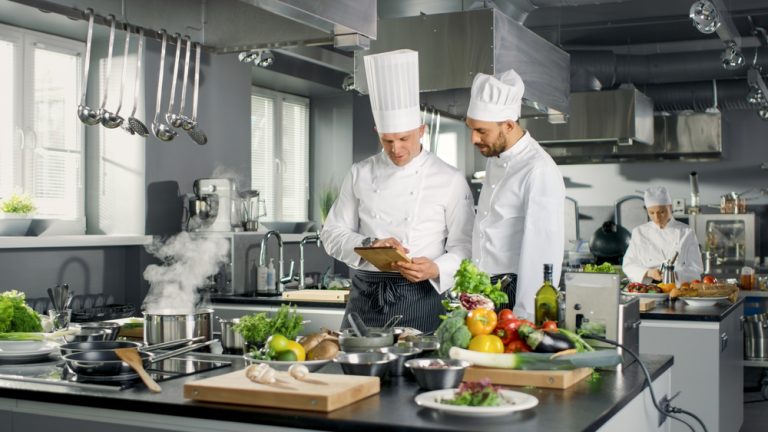Historically, the restaurant industry was slow to adopt technology—a decision that, quite frankly, cost operators a ton of money.
Thankfully, the past decade has seen a proliferation of digital management tools that revolutionized the foodservice industry. Scheduling software, host management systems, and consumer-facing applications allow brands to seamlessly collect customer data in order to create personalized dining experiences, while digital menu boards, mobile kiosks, self-service tabletop devices, and delivery options have changed the way diners expect to eat out. These front-of-house technologies revolutionized the way restaurants do business, reducing costs and increasing profitability.
Now, a similar renaissance is taking place in the back-of-house. Fifty-two percent of restaurant owners report that high food and operating costs are among their top challenges. Inspired by increased productivity and profits due to FOH innovations—coupled with rising labor costs and high employee turnover rates during a booming economy—operators are investing in digital tools that promote safety, slash food waste, and improve overall kitchen efficiency in the BOH. Here, we explore the benefits of automating several BOH processes currently done manually.
Reduced Labor Costs
Automating processes such as inventory and label-making not only encourage safety and consistency in your operation, it can dramatically reduce the time it takes to complete these tasks. Multiplied by dozens, hundreds, or thousands of locations, just a few hours of labor savings per week at each restaurant can add up to millions. Operators can expect to see near-immediate savings on labor costs when automated BOH systems are introduced.
Improved BOH Safety
Let’s face it: things can get hectic in a kitchen and sometimes routine yet important tasks can be overlooked or rushed through in the interest of saving time. If employees say they performed tasks such as cleaning and disinfecting the line or restrooms, checking food temperatures, or completing checklists when they really didn’t, you could be putting your clientele at risk. Automating these tasks takes away the guessing games and ensures food safety-related tasks are completed on schedule.
Improved Accuracy
Digital tools help reduce human error, which in turn lowers foodborne safety incidents. Digital thermometers, for instance, provide accurate, easy to read information about food temperatures. Sensors in walk-ins record data at intervals throughout the day and can alert staff is temperatures fall above or below a set range. Imagine a cooler door accidentally left open overnight, causing food to spoil. With an accurate picture of how BOH technology is performing—and alerts that let you know when something is amiss—operators are protected against mishaps due to human error.
Lower Food Costs and Less Food Waste
According to the National Restaurant Association, restaurants lose four to 10 percent of their food on average. In many cases, this is due to overordering which leads to product spoilage. Digital tools allow operators to see hard numbers and reliable data when it comes to ordering, so less unneeded product is ordered and wasted.
Free Up Time For Other Tasks
Digital tools help free up time for both managers and hourly employees. Managers can pass off tasks such as inventory—now simplified with easy-to-use technology—to hourly employees, for example. Instead of worrying about tedious tasks, kitchen staff can concentrate on doing what they do best: using their creativity to cook delicious food and create new dishes.
A Cleaner, More Efficient Restaurant
Automating your BOH can have small but noticeable benefits. Ditch the clunky filing cabinets—you won’t need them once you have your restaurant’s data at your fingertips. No more digging through years of paperwork if you have a surprise inspection, no more markers, clipboards and unnecessary label stock all over your office. Operators who implement automated BOH ecosystems typically report improved audit scores and higher levels of efficiency within the first month of use.
Ability to Make More Informed Decisions
Perhaps the biggest benefit of implementing digital tools in the BOH is the ability to easily access a reliable digital footprint of your restaurant. Imagine a “command center” where data from all of the critical processes in your foodservice operation can be easily stored, analyzed, and interpreted at any given moment—from anywhere in the world.
Stored away in a dark filing cabinet, data collected from your foodservice operation is never aggregated for analysis. With a comprehensive BOH automation platform, however, operators have unprecedented visibility into the holistic picture of their business—which can be used to gain a deep understanding of what is actually happening inside your restaurant, convenience store or foodservice operation.
